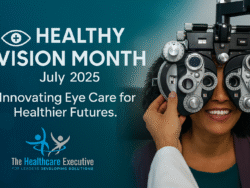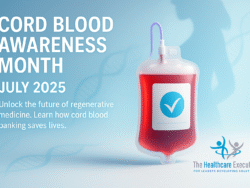World Vitiligo Day – June 25, 2025 | Hospital Leadership in Dermatologic Equity

- Posted by Greg Wahlstrom, MBA, HCM
- Posted in Health Observance Calendar
Hospital Leadership in Dermatologic Equity
Published: June 25, 2025
Each June 25, World Vitiligo Day brings global attention to a skin condition that impacts the pigmentation—and confidence—of millions. Affecting an estimated 1% of the world’s population, vitiligo is an autoimmune disorder that causes the loss of skin color in patches. Hospital leaders must use this observance to elevate dermatologic health as a serious equity issue. People living with vitiligo, particularly in communities of color, often face stigma, misdiagnosis, and limited access to specialized dermatologic care. As researchers have noted, “Vitiligo is a psychologically devastating condition that causes disfigurement and stigma, especially in individuals with darker skin types” (Sankara et al., 2017, para. 3). For healthcare executives, the observance offers an opportunity to promote early diagnosis, culturally competent support, and clinical integration of skin conditions within population health. Skin health is not cosmetic—it is clinical, emotional, and deeply human. Advancing vitiligo awareness within hospitals supports both quality outcomes and patient dignity. Thoughtful leadership on this issue enhances trust and closes care gaps. On World Vitiligo Day, hospital leaders have a chance to reaffirm that every skin deserves to be seen and every patient deserves to be heard.
Hospitals can implement equity-driven skin health initiatives by offering dermatology screenings in primary care and family medicine settings. Staff training on diagnosing pigmentary disorders across skin tones helps reduce racial bias in dermatologic care (UCSF, n.d.). Hospital executives should prioritize inclusive imagery in educational campaigns and provide multilingual vitiligo resources for diverse patient populations. As families from underserved communities seek answers, culturally aligned education and support groups become powerful tools. Leadership visibility—by elevating patient stories and expert voices—builds awareness both inside and outside the organization. As VIPOC observes, “these gatherings offer a unique platform to enhance advocacy skills, expand knowledge, and build community credibility” (VIPOC, 2024). Patient navigators and digital care tools can guide those newly diagnosed with vitiligo toward treatments and psychosocial support. Inpatient and outpatient dermatologic care teams must collaborate on consistent care protocols. Equitable access to phototherapy, topical treatments, and counseling must be ensured regardless of zip code. Leading hospitals know that health equity isn’t abstract—it starts with listening and acting on the needs of those most overlooked.
Vitiligo’s emotional toll often exceeds its physical presentation. For patients—especially youth—coping with visible skin difference can spark anxiety, social withdrawal, and bullying. As researchers note, “ Children with visible skin conditions are at an increased risk of experience in psychological distress, including anxiety, depression, and social stigmatization” (Petersen et al., 2023 para. 6). Hospital-based behavioral health teams should work in tandem with dermatologists to deliver holistic care. Trauma-informed practices that normalize difference and reduce shame are essential for long-term well-being. Family engagement is key—parents and siblings may also need education and support. Peer mentorship programs and virtual support networks can connect families navigating similar experiences. Celebrating resilience, rather than merely managing symptoms, transforms clinical culture. Executives should ensure child life specialists and psychologists are trained in supporting children with chronic visible conditions. As Feragen and colleagues observed, “there is considerable variation in psychosocial adjustment in children with visible differences, and resilience is possible with appropriate psychosocial support” (Feragen et al., 2009, p 73). Campaigns during World Vitiligo Day should focus on empowerment—not pity. Patients who feel affirmed in their identity are more likely to seek treatment and adhere to care plans. In this way, equity becomes not just a metric, but a mindset in how we deliver care.
Hospitals can also contribute to national advocacy and research by participating in vitiligo registries and clinical trials. Precision dermatology, biologic therapies, and melanin-restoring innovations continue to evolve—but they must be inclusive in development. As recent research suggest, “The under representation of racial and ethnic minorities in dermatological clinical trials limits generalizability and may exacerbate health disparities” (Nguyen et al., 2023). Hospital IRBs should evaluate protocols for representation and accessibility. Community-based participatory research can uncover new barriers and opportunities in care delivery. Executive leaders can also leverage World Vitiligo Day to form strategic alliances with dermatology associations, public schools, and advocacy organizations. Investing in equity audits of dermatology departments ensures care is not only state-of-the-art—but equitably distributed. Fundraising and philanthropy initiatives can expand access to advanced care for uninsured and underinsured patients. Just as we’ve integrated cardiology and oncology equity initiatives, vitiligo demands that same level of systemwide attention. A recent systematic review emphasized the need for “institutional evaluations and multi-sectoral interventions” to close racial gaps in dermatologic care (Azar et al, 2024). Advocacy and accountability begin at the executive level. And change begins with intention.
World Vitiligo Day 2025 is not just a global event—it’s a hospital leadership imperative. Administrators should see this observance as a checkpoint for clinical improvement, patient engagement, and community responsiveness. Thoughtful programming, intentional partnerships, and inclusive policy development can all emerge from this single day of awareness. As Azar and colleagues affirm, “Health systems must examine institutional structures and policies that perpetuate disparities in dermatologic care, particularly among racial and ethnic minorities” (Azar et al., 2024, p. 554). Leading with compassion and competence, hospitals can reimagine skin care as part of whole-person health. The Healthcare Executive affirms: “When health systems see every skin as worthy of care, health equity becomes possible.” By honoring the experiences of those living with vitiligo and committing to solutions that close gaps, hospitals move closer to a just and inclusive healthcare future. June 25 is a call to action—and a call to empathy.
Discover More
Hospital executives have a chance to lead with dignity and data. Take steps this World Vitiligo Day to embed skin health into broader equity and population health strategies.
Internal Resources
- Skin Cancer Prevention and Awareness Month – May 2025
- Cultural Leadership in Healthcare Management: Navigating Critical Issues for 2024
External Resources
- World Vitiligo Day Official Site
- NIAMS – Vitiligo Information
- American Academy of Dermatology – Vitiligo Overview
- Vitiligo Support International
- Sarkar, R., Chugh, S., & Bansal, S. (2017). Vitiligo: A review of some facts lesser known about depigmentation. Indian Journal of Dermatology, 62(4), 392–405. https://www.ncbi.nlm.nih.gov/pmc/articles/PMC5781159/
- University of California, San Francisco. (n.d.). Inclusion of skin of color in medical education. UCSF Library. https://guides.uhttps://guides.ucsf.edu/anti-racism/iscpcsf.edu/anti-racism/iscp
- VIPOC. (2024, November 14). How conferences strengthen your role as a vitiligo patient leader. https://www.vipoc.org/how-conferences-strengthen-your-role-as-a-vitiligo-patient-leader/
- Petersen, B., Frigerio, A., Neri, E., & Biondi, M. (2023). Psychosocial impact of skin diseases in pediatric populations. Italian Journal of Pediatrics, 49(1), 5. https://www.ncbi.nlm.nih.gov/pmc/articles/PMC9951542/
- Feragen, K. B., Kvalem, I. L., Rumsey, N., & Borge, A. I. H. (2009). Psychosocial adjustment in children with a visible difference resulting from a congenital craniofacial condition: A multi-centre prospective study. The Cleft Palate-Craniofacial Journal, 46(6), 603–615. https://www.ncbi.nlm.nih.gov/pmc/articles/PMC2874609/
- Nguyen, M., Elias, J., Wongvibulsin, S., & Zeichner, J. (2023). Diversity in clinical trials for dermatologic drugs approved by the FDA (2015–2020). Journal of the American Academy of Dermatology, 88(5), 1140–1147. https://www.ncbi.nlm.nih.gov/pmc/articles/PMC10175482/
- Azar, F. K., Motaparthi, K., Hogan, D. J., & Strowd, L. C. (2024). Racial and ethnic disparities in access to dermatologic care: A systematic review. Journal of the American Academy of Dermatology, 90(3), 547–557. https://www.ncbi.nlm.nih.gov/pmc/articles/PMC12037365/



